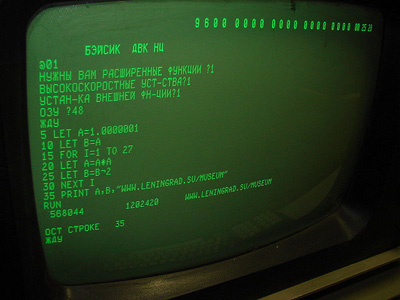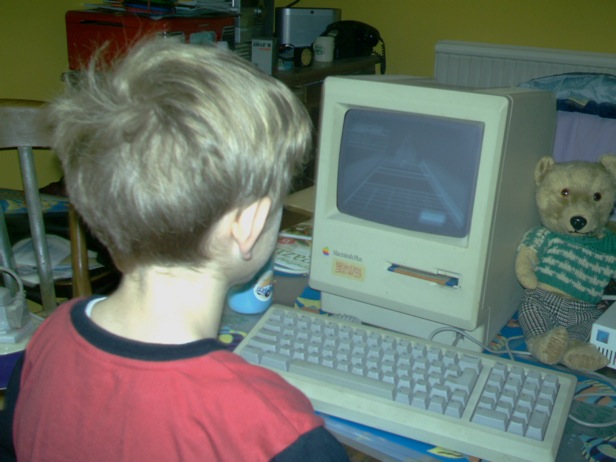Really boring books (You have to read anyway): Communist Manifesto
Written by David Dylan
Those of you old enough to remember the cassette tape, VHS and porn actresses without boob jobs and with pubic hair, will have some vague recollection of this big bad entity called 'the Soviet Block'. If you don't, do not worry, it's gone, mostly.

MP3-player, oldscool style.

Big bush, small tits.
The Soviet Union and its satellite states were the reason we had an armaments race, which led us to invent space travel, nukes, the Internet and non-stick coating. You see, there were these countries that were ?Communist? and they helped us win World War Two. In fact, they pretty much did it on their own.

This picture would have filled two concentration camps if it wasn't for them...
To put things in perspective: The so-called "Eastern Front" where Hitler got the bulk of his military pinned down while the western allied powers mopped up the remainder in France, saw over thirty million casualties. Close to half of the total death toll of the entire war, including the two Swiss border guards accidentally shot while returning Jewish refugees to the Nazis. This is pretty baddass considering that the US, Canada, Australia, South Africa, the UK with its colonies, Italy, Germany, to name but a few, were also burning through their resources of carbon-based units like mad. We all know Canada is really big, well, the US is not a micronation either and Australia... well... don't get lost there. Some fairly large players on both sides therefore but the Soviet Union just didn't give a shit. If they wanted a city, they took it. If they liked a bridge it was theirs. They were like the Borg; you shot ten, and they sent a hundred. You bombed the hundred, out came another thousand.
They were so badass; when the Germans threatened to take their industrial centres, they took the machinery and left the people to fuck the approaching armies up. They then planted the equipment on the frozen ground a bit farther down the road, got new humans to man them and only then started thinking about putting a building around them. They out-produced all their allies combined, all the while taking casualties like there was no tomorrow.

Soviet soldiers getting a tan...
It is often surmised that, in fact, the western allies weren't so much fighting the Germans as trying to get past them to grab as much territory they could before the Soviets did. Certainly, the Soviet block could have taken the Axis powers single-handedly.
The Soviet block didn't get this powerful by mere chance. It had a lot going for it. For one, ample resources and a rather unique way of deploying them. One of the resources they had a rather abundant supply was carbon-based units, or humans.

Rather sexy ones, apparently...
Their use of this ample resource was rather wasteful, but in a way sensible. After all, to build a tank you need steel, several humans, a factory (at some point, anyway) and various other resources. To build a human you only need two other humans.
The problem with humans, however, is that they are stubbornly unwilling to die. Like an iPhone, they come out all shiny and new, and pretty much useless because their original programming has all these limitations. To get a human that?s good for anything other than making new humans you need to reprogram them to unlock all these extra capabilities, like the die-horribly-by-machine-gun-fire, the blind-obedience and the sing-rousing-party-songs features. (Rousing Party Songs now also available through iTunes.)

Brought to you by capitalism.
The Soviet Union had become pretty good at jailbreaking humans. This voided the warranty, but they didn?t care because they had so many of them.

Early hack attemps weren't very spohisticated.
They were so good at it because they had a lot of practice, and this ready-made Open Source operating system called "Communism". They ran the Solid Stalinist distro, based on the v3 core. There were others, like it's predecessor Largely Lenin and the marginalized offshoot Totally Trotzkist. Watered down, more userfriendly, versions included Silly Socialism (which never progressed beyond the v2 core but still enjoys moderate popularity amongst Europeans and American presidents). There was also the proprietary distro National Socialism, which was so bad its name wasn't even an alliteration.

Also, it took out your eye, apparently.
What these distro's all have in common, however, is their treatment of carbon based components as all equal. Unlike other systems they do not use a master-slave construct or a decentralized system based on balancing resources, but rather place the central core at the top of the hierarchy with all other components functioning as semi-parallel units. To do this, the inbuilt individuality of the units has to be deactivated, with as a side effect the deactivation of its self-preservation routines.
This architecture is efficient in the sense that it keeps the central core firmly in control of the entire system, but wasteful in the sense that it allocates system resources to all units in uniformly sized blocks. It also distributes these blocks blindly, without awaiting either a request from the unit or an acknowledgement that the previous block has been processed, leading to buffer overruns, as well as resource starvation. The allocation of resources therefore is usually seriously out of sync. This is now thought to be such a serious flaw that development on this system has all but been discontinued. Existing installs suffer lack of community support and usually need ported Capitalist applications to keep running.
This in stark contrast to the Capitalist based systems, which decentralize the distribution of resources, based on an imperfect but more resource-friendly model of complex interchanges between largely autonomous components and processes.
Both systems branched off from the now mostly defunct architecture of "Monarchy" which was based on a master-slave system where a master (Monarch) would hoard the resources and distribute them, or demand them, based on a system of simple but rigidly regulated system calls.
Work on the non-Monarchy line of operating systems was begun in France in 1789 where the first beta-version was installed. It was rudimentary, though and quickly saw so many patches and fixes that it is arguably now a system in its own right, with very little left from the original core. In the United States several working groups expanded upon the idea to arrive at the Capitalist model, abandoning the last vestiges of the Master-Slave model fairly late in development.
In the rest of Europe, working groups were competing with each other, working on either a Monarchy-based but Capitalist-influenced system (usually proprietary), or advancing the development of an entirely new branch; the Communist system.

It's safe to assume it wasn't a good games platform.
The central principles of the early proto-Communist developments were taken up by several programmers and expanded upon, most notably Karl Marx and Friedrich Engels who arguably were the ones who branched the line towards what we now refer to as "Communism". At the time "Communism"-Beta was so rudimentary and badly supported that the first working install (Called the Paris Commune), suffered a series of kernel panics and had to be uninstalled. But its brief period of uptime did demonstrate the principles well enough to inspire a small but growing number of supporters and developers, including a sizeable group of industrialists who were happy to hit the "donate" button.
Marx and Engels secured ample funding, and with their PayPal account comfortably full, they worked at their project relentlessly. After outlining their thoughts in several whitepapers they arrived at the release of a first stable release in 1917. (Finalized by the core team led by Lenin.) The distro continued to evolve, with versions branching off and being installed in many parts of the world.
Two of the whitepapers mentioned are of particular interest: Das Kapital and the Communist Manifesto. Das Kapital was really just a working draft outlining (in many ways incorrectly) the workings of other systems and as such it is completely obsolete. The Communist Manifesto, however, provided a first real plan for a working install, including installation instructions and a rudimentary user-guide.
First published in 1848, it served as a guideline for scores of later programmers and engineers working on the later distro's which would then lead to the Solid Stalinist stable release which would run on so many platforms that for a while it even threatened the market share of the Capitalist OS which, while superior in most respects, failed to convince the younger generations (most notably the Mac users) of its superiority.

Not convinced.
World War two saw a brief rise of the National Socialist system, which replaced a particularly resource-hungry and badly supported Capitalism install in Germany. (A cluster of clients originally each running their own dedicated Monarchy version, administered from a central server running the Pro, or "Empire" version of Monarchy.) For a brief period this installation appeared to be stable, but it soon became apparent that it was inherently flawed. It was particularly bad at resource-management and did not support a sizeable portion of its modules, even destroying many carbon-based units the system deemed incompatible.
When it also started compromising the security of other systems, the system administrators of both the Capitalist networks as well as the Solid Stalinist cluster found themselves forced to try and take the runaway National Socialist process offline. A series of Kill and KillAll commands were sent, with varying degrees of success. Eventually it was decided that a complete format and reinstall was the only viable option.

"KillAll" really meaning something, in those days.
Now the two systems found themselves in a competition for market share. The Solid Stalinist user-base expanded into networks previously compromised by the National Socialist system and, rather than return the systems to their previous Monarchy or Capitalism installs, set them up as clients running a version of Communism compiled to suit the local system specs, usually heavily dependent on the central server running in Moscow.
They could do this because their carbon-based units were both in ample supply and had their self-preservation routines deactivated, making them in effect a DdoS attack, flooding the National Socialist systems. This gave the Communist system a big boost without which it might well have been in Legacy mode much sooner.
The system, however, kept increasing its footprint, demanding more and more resources. Security patches as well as increased demand from existing, and inherently inefficient, processes put a strain on the core modules until a runaway process in the Eastern Germany client caused a kernel panic and the client dropped its firewall. The central Moscow unit now faced a cascading effect of system calls and buffer-overflows eventually resulting in the need for a reboot. The downtime, however, was too long for the other clients; requests for resources timed out and the clients started overloading each other. Eventually most clients either froze or crashed altogether. The central Moscow unit could not be reinitialised without support from its client systems. The network was eventually rebuilt using Capitalist or in some cases Dictatorship distro's downloaded from the west.
These days the user base of Communism-based systems has been in decline, the main install base having adopted the Capitalist distributed model as more compatible with the west.Even the Mac users have embraced a Capitalist distro, albeit augmented with some principles borrowed from National Socialism. (Most notably the strict hierarchy with the core [The Steve Jobs process] as single resource controller.)
While most documentation from this bygone era can safely be ignored as obsolete and irrelevant, any working group seeking to improve existing distro?s or release a new version should refer to the Communist Manifesto if only to understand the initial success of the "Communist" family of systems and its inherent flaws.
For those who grew up using point & click interfaces there are cartoon versions available.

Not as groovy as this, though.
As a book it doesn't read very well. As a manual it is hopelessly out of date. Carbon Based units are still as cheap as they ever were, however, so the aspiring programmer might well consider the core architecture as viable.
Metadata:
- ID: 4185
- Type: 2
- Title: Really boring books (You have to read anyway): Communist Manifesto
- Subtitle:
- Author: David Dylan
- Author ID: 109
- Date Posted: 2010-04-16T10:00:23